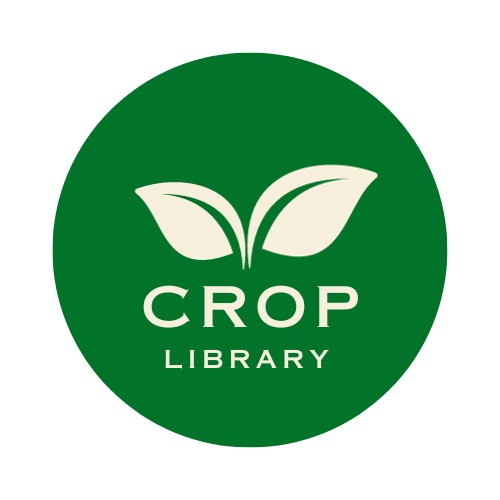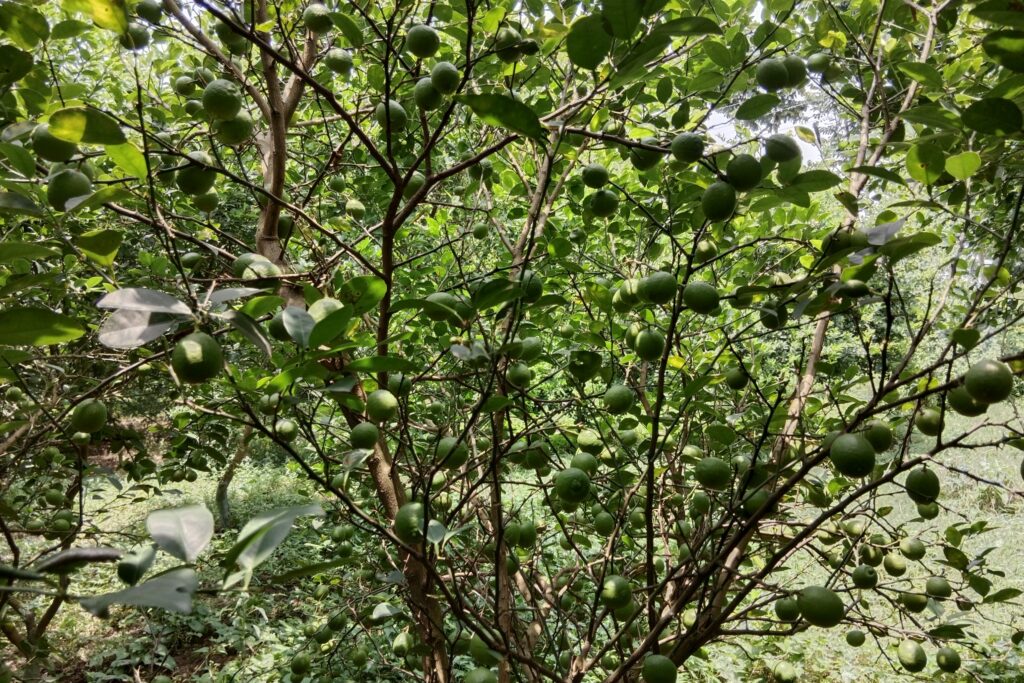Introduction
Many home gardens start with tomatoes because they produce juicy, tasty fruits that are great for salads, sauces, and snacks. Good care and feeding are essential for a plentiful crop. Fertilizing tomatoes is one of the most important parts of caring for tomato plants. Mastering the art of fertilizing your plants at the right time and in the right way is the key to cultivating large, robust, and fruitful tomatoes. It’s essential to know when to fertilize tomato plants to encourage strong growth and increase yields.

Tomatoes, being warm-weather plants, require ample sunlight to flourish, thriving best when temperatures range between 21 and 24°C.
Understanding Tomato Plant Nutritional Needs
Before discussing when to fertilize, it is important to understand the nutritional needs to fertilize tomato plants. To grow a significant crop, both organic and inorganic fertilizers must be applied correctly. Nitrogen (N), phosphorus (P), potassium (K), calcium, and magnesium are necessary for tomatoes to grow healthily. These nutrients support several stages of growth, including leaf development, strong root system development, flower and fruit production, physiological disorders, and more.
When to Start Fertilizing Tomato Plants
When to start fertilizing your tomato plants depends on their growth stage, the type of fertilizer used, and the condition of the soil. Here’s an explanation for that:
When Planting
Enhance the soil quality before planting tomato transplants or seedlings by incorporating organic materials such as compost, which aids in improving soil structure and supplying essential nutrients initially. To maintain soil richness during the growth period, bury compost underground before planting. It’s recommended to introduce organic or slow-release fertilizers like bone meal and crushed eggshells at this stage, covering them with soil afterward.
Early Growth Stage
After your tomato plants have begun to take root, which usually happens two to four weeks after planting, you may choose to use a tomato-specific fertilizer or a fertilizer that is well-balanced and has equal amounts of nitrogen, phosphorous, and potassium (N-P-K). Strong root and leaf development is encouraged by this. Three to four weeks after transplantation, it is a good idea to apply a nitrogen-rich fertilizer to give the plants time to adjust to their new environment. If there is already enough nitrogen in the soil, use a fertilizer that is high in phosphorus and has an NPK ratio greater than 5-20-0.
Pre-Blooming and Flowering Stage
As the plants transition to the flowering stage, they require more phosphorus to support flower formation and fruit set. Consider applying a fertilizer higher in phosphorus (the middle number in the N-P-K ratio) during this period.
During Fruit Development
When the tomato plants start producing fruits, they require a consistent supply of nutrients, especially potassium. Potassium aids in fruit development and improves fruit quality. Fertilizers with higher potassium content are beneficial at this stage.
Frequency
During the growing season, fertilize tomato plants every three to four weeks, but don’t overfeed them as this can cause issues like nutritional imbalances or fertilizer burn.
Organic Fertilizers for Tomato Plants
Organic fertilizer for tomatoes is widely favored for nourishing crops. Begin by enhancing periods of soil with organic materials that offer a slow nutrient release during the entire growth period. Below are some examples of organic fertilizers:
Coffee Ground
- Coffee grounds contribute nitrogen, potassium, and phosphorus to the garden.
Fish Emulsion
- Derived from decomposed fish parts.
- Rich in nitrogen, trace minerals, and nutrients.
- Provides immediate nutrient boost, promoting vigorous plant growth.
- Suitable for various plants like tomatoes, vegetables, flowers, and shrubs.
Cottonseed Meal
- A byproduct of cotton production.
- Rich in nitrogen, phosphorus, and potassium.
- Provides slow-release nutrients for plant growth.
- Applied as a soil amendment or fertilizer.
- Suitable for various plants, aiding in balanced nutrition and soil enrichment.
Bone Meal
- Ground animal bones, typically from cattle.
- High in phosphorus and calcium.
- Enhances root development and flowering in plants.
- Ideal for tomatoes, bulbs, flowering plants, and vegetables requiring phosphorus for growth and blooming.
Blood Meal
- Dried and powdered animal blood, often from cattle or pigs.
- High nitrogen content.
- Acts as a quick-release nitrogen fertilizer, promoting leafy growth.
- Used to boost nitrogen levels in soil or as a supplement for nitrogen-hungry plants.
Inorganic Fertilizer
Inorganic fertilizers can quickly correct nutritional deficits in plants, though they are quickly used up by plants. The buildup of harmful salts in the soil can result from overapplication and frequent use.
Tomatoes rely on nitrogen, phosphorus, and potassium for the growth of their leaves, roots, and fruits.
Nitrogen, crucial for supporting stems and leaves, should be used cautiously during tomato plant fertilization to prevent an excessively lush, green plant with few fruits due to an overly strong stalk.
At planting, apply a phosphorus-rich water-soluble fertilizer, followed by a second application upon the emergence of the first fruit.
After harvesting the initial fruit, it’s advisable to fertilize tomato plants using a mixture containing calcium, magnesium, and essential trace elements. Utilizing crushed eggshells, which are calcium-rich, at the plant’s base is highly recommended. Epsom salt, abundant in magnesium, serves as a beneficial supplement. When deficiency symptoms appear in the leaves, it’s suggested to apply magnesium and calcium through foliar application.
To encourage the development of potted tomatoes, it’s crucial to maintain regular feeding, potentially at a fortnightly interval, considering the specific type of potting mix used throughout the growth phase.
It is advised to apply fertilizers 15 cm away from the stems to prevent root burn.
How to Fertilize Tomato Plants?
If manure application in the soil is not planned before planting, fertilize tomato plants for an early start. After digging, add the necessary quantity of fertilizer to the hole, covering it with clean dirt so that the fertilizer doesn’t come into contact with the roots. When fertilizing tomato plants, use a balanced fertilizer that has the same amounts of nitrogen, phosphorus, and potassium.
Use compost or slow-release fertilizer to apply it before planting. Once the plants are established, feed them when the first fruit clusters appear, and continue the process every 4-6 weeks. Avoid making direct touch with the stem by applying the substance evenly around the base. For optimal nutrient absorption, water the plants after fertilizer.
To ensure a specific fertilizer strategy, think about conducting a soil test. Mulching with organic materials helps to retain moisture. If there’s more foliage than needed, adjust the fertilizer. To ensure a bountiful harvest of wonderful tomatoes, enhance blossom and fruit development, and improve plant health, regular and appropriate fertilization is essential.
Benefits of Fertilizing Tomatoes.
Tomatoes require fertilizer to develop and bear an enormous crop because they are heavy feeders. Fertilizing tomato plants improves the overall growth of plants and productivity. A balanced fertilizer provides essential nutrients like nitrogen, phosphorus, potassium, and calcium, promoting good foliage growth and increasing flower and fruit development.
Adequate phosphorus fertilization promotes the development of strong roots in plants, while potassium is essential for creating resistance against illnesses and environmental stressors and increasing tomato yields that are tasty and nutrient-dense. Sufficient fertilizer availability also promotes early fruiting and prolongs the harvest season. Frequent fertilization also protects against nutrient deficits, such as blossom end rot, which can be prevented using calcium. Hence, carefully planned fertilizer is essential to growing robust tomato plants that yield an abundance of delicious fruit.
Factors Affecting Fertilization Timing
Apart from growth stages, several factors can influence when to fertilize tomato plants:
Soil Test
Conducting a soil test is valuable for identifying deficient nutrients and determining the specific fertilizer requirements for your soil, ensuring both primary and secondary nutrients are sufficient.
Tomatoes flourish in slightly acidic soil, ideally within a pH range of 6.0 to 6.8. Test your soil’s pH level and make adjustments as needed by incorporating organic soil amendments such as lime or sulfur.
Weather Conditions
Adjust fertilization schedules based on weather patterns. Extreme heat or excessive rainfall can affect nutrient uptake by the plants.
FAQs
Q1. How often should you water tomato plants?
Watering tomato plants often is recommended to keep the soil consistently moist. On average, deep watering should be done every two to three days, while the frequency of water application can be changed depending on the weather. Increase the frequency during warmer weather, making sure the soil remains constantly moist. To prevent fungal infestation, water the base in the morning to avoid getting the foliage wet.
Q2. Why are my tomato plant’s leaves becoming yellow?
Yellowing of leaves on tomato plants may signal the following issues.
- Nutrient deficiencies, especially nitrogen, are the most common cause.
- Overwatering or underwatering also contributes to leaf yellowing.
- Diseases like early blight or pests may cause yellowing.
- Examine plants for signs of pests or diseases for proper identification and treatment.
Q3. Why are my tomato leaves curling?
Curling tomato leaves can result from insect infestation like aphids and mites. In addition, environmental stress like extreme temperatures, uneven watering, high humidity, or physiological disorders may cause leaf curls. Check for pests, and diseases, and ensure a consistent environment. Adjust watering practices and provide proper nutrients to address potential causes of leaf curling.


